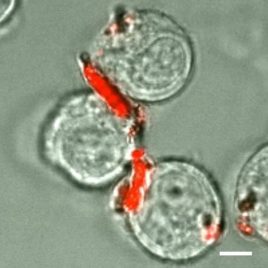Medicine can be delivered to specific parts of the body by fitting it inside a “backpack” and attaching it to white blood cells. This targeted drug delivery means other tissues of the body aren’t affected, and side effects are limited. Original research presented at a meeting of the American Chemical Society on March 17, 2015.
Tag: chemistry
Research is too conservative
A pair of papers calls for researchers to take greater risks when choosing research problems to study in order to speed up scientific discovery and innovation. The two papers, one from PNAS and another from the American Sociological Review, used computer models to analyze millions of research papers. The study published by PNAS found that […]
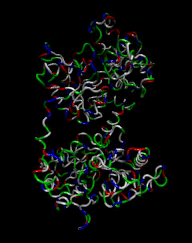
Playing by EAR – how acoustics could help study proteins
A new technique called electronic acoustic Raman (EAR) spectroscopy could improve the way we study proteins, which in turn could help fight diseases like cystic fibrosis. The technique involves using a laser to excite small molecules like proteins; when excited they vibrate and give off sound at a specific frequency. By analysing the sound, researchers […]
Screening software could help find new drugs
A new method of screening molecules for their ability to bind to enzymes and other proteins could help discover potential new drugs. A newly built model looks at covalent bonding, a much stronger type of chemical attraction but one that is harder to model. Computer models that predict which molecules will interact with enzymes have existed […]
Pushing the limits of chemistry with iridium
A chemical containing the element iridium has set a new record for the highest recorded formal oxidation state in the periodic table of the elements. Formal oxidation state describes the number of electrons an atom loses or gains when it joins with other atoms in chemical compounds; the higher the oxidation state, the greater the […]
Chemicals could help bee colonies fight mite infestations
Researchers have identified certain chemical compounds that could help fight infestations of the parasitic Varroa destructor mite, a major pest for beekeepers. The mites use smell to distinguish between different worker types in the bee colony, preferring younger ‘nurse’ bees over older foragers. The team found that treating the bees with certain chemical compounds confused […]

Unlocking the secrets of amber’s toughness
A new analysis technique helps explain how amber achieves its strength and durability, and could help humans mimic it in their own materials. Scientists have been able to isolate the building blocks – including communol, ozol and succinic acid – but exactly how they fit together has been a mystery. Made from fossilized tree sap, amber […]
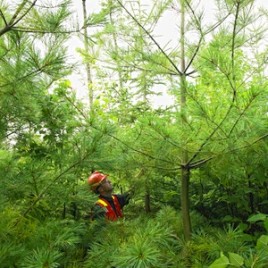
A tale of good fungus, bad fungus
Researchers have found a new source for a fungus-fighting chemical: the pine trees and blueberry bushes of the Acadian forest. Griseofulvin is a compound originally isolated from a mould in the same family as those which produce penicillin. It’s used to fight fungal infections in humans and animals, but has also been used as a fungicide […]

Accurate drug testing on the go
Researchers have found a way to condense a complete drug-testing lab into a device the size of a backpack. The device uses a technique called microfluidic to extract compounds from a dried urine spot and subject it to complex chemical analysis by mass spectrometry. The new device detected cocaine and other drugs at concentrations down to […]

Most precise measurement of antimatter’s charge
New results from the ALPHA experiment at CERN have provided the most precise measurements yet of the electric charge of antihydrogen. Researchers from the international collaboration – which includes many Canadians – examined whether or not antihydrogen atoms would react to electric fields. They did not and the data indicates that as predicted, antihydrogen is […]

New method to detect bogus ‘male enhancement’ drugs
A new technique can successfully distinguish between 82 different compounds used in both real and bogus ‘male enhancement’ pills in less than 10 minutes. Compounds – both natural and synthetic – that are chemically similar to the active ingredients in erectile dysfunction drugs like Viagra and Cialis are often mixed into pills and sold as […]
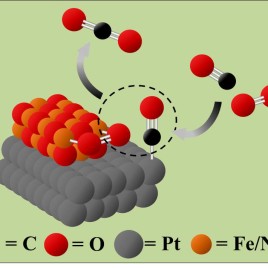
New nanoparticles provide superior pollution prevention
Removing toxic carbon monoxide (CO) from car exhaust and other pollution sources could soon be cheaper and more efficient, thanks to a new type of nanoparticle catalyst. Catalytic converters that turn CO into benign CO2 rely on expensive metals like platinum to speed up the chemical reaction. The new nanoparticles combine platinum with cheaper iron […]
What colour were ancient reptiles?
To the chagrin of dinosaur fans everywhere, skin colour generally doesn’t survive fossilization. But a new analysis of fossilized skin from three ancient sea-going reptiles – an icthyosaur, a mosasaur and a sea turtle – may have changed that by providing strong chemical evidence of the pigment melanin. Interestingly, the icthyosaur appears to have been […]
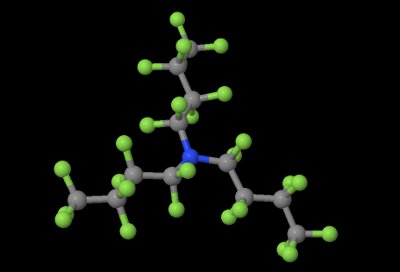
A new greenhouse gas?
Perfluorotributylamine is a non-reactive, long-lived substance that is used as a solvent and a heat transfer fluid in some specialized industries. A new study shows that it’s also a powerful greenhouse gas, producing as much warming as 7100 molecules of CO2 over a 100-year timeframe. Even though its concentration in the atmosphere is tiny (0.18 […]
